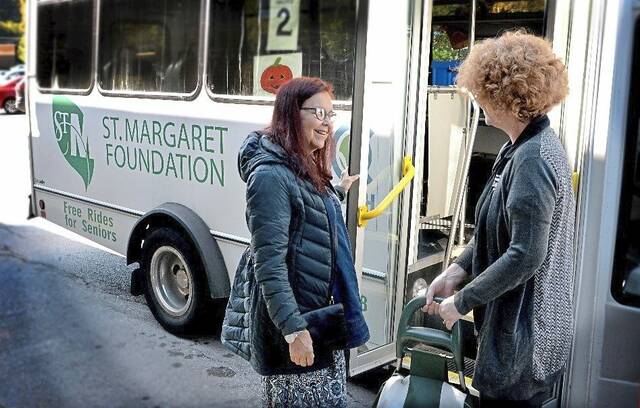Gambling, keeping a disorderly house, accessory to illegal marriage and drunkenness were just some of the crimes committed by inmates housed in the Allegheny County Workhouse and Inebriate Asylum, which opened Aug. 6, 1869, and sat on the far eastern side of O’Hara.
The Workhouse sat along Freeport Road between O’Hara and Blawnox, and farmland covered more than 1,100 acres where RIDC Park now sits. The lower wall was nearly 10 feet tall and was mostly broken down once the Workhouse shuttered in 1971. Guard houses lined the other side of Freeport Road and were arranged from short to tall, with higher-ranking guards in the larger houses.
According to an annual report published on historicpittsburgh.org (hosted by the University of Pittsburgh Library System), the number of inmates in 1927 was 5,655.
After discharges, deaths and escapes, the number of inmates fell to 1,168 by the end of that year — 1,109 men and 68 were women. The majority of the crimes committed were abusing family, vagrancy, disorderly conduct and drunkenness.
The majority of the non-violent inmates served a 30-day sentence. Of those, more than 2,800 were first-time offenders.
Other notable statistics from a 1927 report show that more than 43,000 letters were received by inmates but only 9,800 were sent. Nearly 12,000 medical calls were made, with the most common being colds, headaches and constipation. One person died in his cell that year without seeking medical services; it was determined that his cause of death was lobar pneumonia.
The Workhouse was self-sustaining and ran without much government assistance. The average cost to maintain an inmate was 40 cents a day after deducting their earnings.
Inmates picked fruits and vegetables from the farmland. The 1927 report stated that the inmates produced 2,906 bushels of sweet corn, 98 tons of cabbage, 3,100 bushels of potatoes, more than 14,000 gallons of skim milk and 3,930 pounds of butter. They were also responsible for taking care of the livestock, which consisted mostly of cows and chickens. Each hen averaged 135 eggs, yielding a total of 7,516 eggs that year.
Inmates also were busy making brooms, brushes, carpet and chairs.
As a lifelong Blawnox resident, John Dolhi fondly remembers playing baseball on the Little League fields that sat adjacent to the Workhouse as the inmates watched.
“I really enjoyed playing baseball in front of the inmates. I loved the loud, boisterous cheers,” Dolhi said. “They made the game more fun.”
Oftentimes, Dolhi said, the young players would line up outside the grounds, and the inmates would toss change into their outstretched ballcaps.
It was demolished in 1974. The last remnants of the Workhouse are the walls along both sides of Freeport Road, some steps that lead into a grassy hill on the guard side of Freeport Road and apple trees scattered throughout RIDC Park.
As a young boy, Dolhi likely picked a few apples there himself.



















